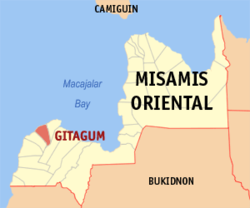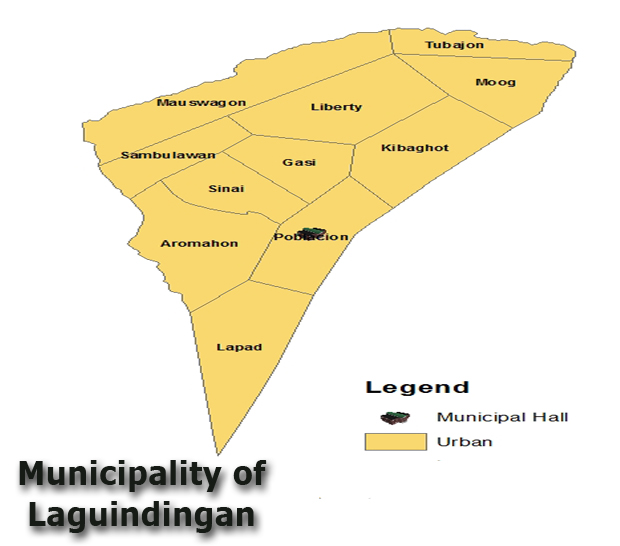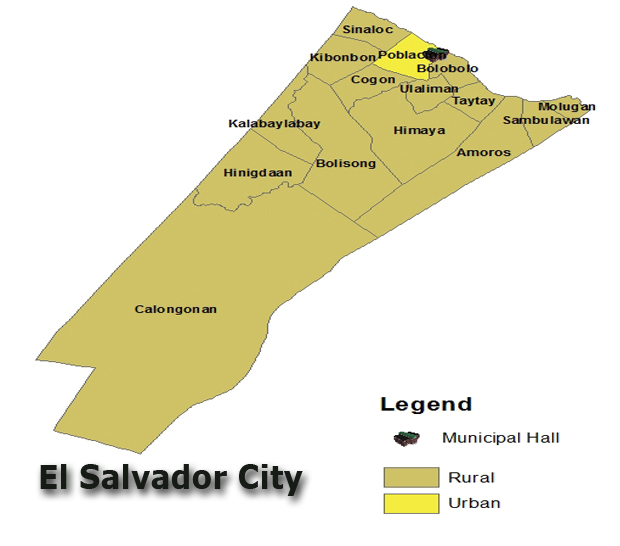Laguindingan used to be called “Daligdigan” coined from the words “daligdig“, meaning trickling water from Soloan Creek, and “digan“, a buri plant, which was used by the early settlers as roofing and walling materials. The name later evolved into “Laguindingan” because it is easier to pronounce and has a melodious sound.
The presence of an old Spanish port “Moog” at Punta Sulawan manifest the claim that before the settlers came to Laguindingan, the place was the hideout of robbers, pirates and bandoleros because of the once thick forest cover of the municipality. A brave man named Calixto Caseres together with his family moved in from Alubijid and settled for good. Other settlers followed and soon the place became a thriving community. A number of Cagayan de Oro civilians and government officials hide in Laguindingan during the second world war. Blocking force was established in Laguindingan that let Japanese soldiers to use boat instead going to Iligan.

Laguindingan is a fourth class municipality in the Province of Misamis Oriental on the Mindanao island, southern part of the Philippines. Most notable landmark is the Laguindingan Airport, located between Cagayan de Oro City and Iligan City.
Website:
Landline:
Mobile:
Municipal: Laguindingan
Barangays: 11
Address:
Email:






